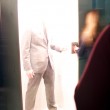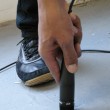Aerotone #7 © Ryan Zoghlin; all photos courtesy Photo Review
The complete portfolio of competition winner images can be viewed at: http://www.photoreview.org/competition/portfolio.php/38/1
Ryan Zoghlin is the First Prize winner of the 27th annual Photo Review International Photography Competition juried by Robert Mann.
Gabriella Radujko: Thematically, your portfolios explore being “on an edge” or “on the edge” (as opposed being edgy). These include:
- Surf-o-glyphs: where surfers are on the edges of water
- NIMBY (Not in My Back Yard) where industrial power encroaches on the periphery of modest single family homes
- Aerotones and Airshow which capture airplanes performing aerobatic maneuvers at the Chicago Air and Water Show
Why does this theme appeal to you?
Ryan Zoghlin: I am glad you ran a thread through these works. Maybe it’s just that things are more interesting where worlds intersect. Whether this is where the water’s edge meets the land or when the circus rolls into a small town. On the edge is where relationships and juxtaposition can be complicated and hopefully more visually interesting.
Funny, though, I do tell myself when working technically that “I’m working on the edge.” For some reason, I like to come up with elaborate schemes to produce images. These seem like great ideas in my head, but often in practice don’t work out.
My equipment tends to be more on the edge, also. Cameras with multiple lenses and shutter, hand held 5×7 and 8×10 cameras, pinhole and fingerprint cameras.
GR: You received First Prize for Aerotone #7, an Orotone of two planes performing flying maneuvers punctuated by vapor trails. Talk about why this particular photographic process was used and why does it work aesthetically?
RZ: Originally, I had done the airshow as straight black and white to print. I probably shot the show ten years in a row. I was trying to move beyond the straight prints and I was thinking more about the real sculptural affect that the contrails make as the airplanes were flying. I was trying to make a more three-dimension effect for the images. I started shooting it with a 5 x 7 camera, knowing that I wanted to do some contact prints, originally thinking that they might be platinum, or something like that. I was at an antique image show in Chicago and ran by an Orotone print that someone was selling. Not knowing if I had ever seen one before, I was pretty blown away by it. I asked the seller, “What is this?” and he said, “An Orotone print”. And I asked him, “How do you make these”? And he looked at me and he said, “How would I know?”
The three-dimensional affected me but I also liked that it was an older process that gave a classic, vintage look to the image. It took me a couple of years to figure it out. I did a lot of research on Orotones and tried to find out how they are made and learned there is no written recipe. With experimentation, I made several Orotones and then took them from there. It has a kind of granular effect, playing with the gold powder, there’s a metallic feel to it. All these things work together to make the image really interesting.
GR: Minor White spoke of photographs as mirages and the camera as a metamorphosing machine. He said it was incumbent upon the photographer to free himself of the tyranny of the facts before him to get from the tangible to the intangible. What helps you capture the intangible?
RZ: Whenever I approach something, I try to make it my own. I once spoke to someone who was afraid of shooting an event because he said it was shot a million times. Like the air show, there are millions of spectators there and there are thousand of cameras photographing it. I’ve just been able to feel the kind of image I want to see on the wall. I say, okay, here’s my subject matter, how do I want this to look?
How do I make it intangible? I think I’ve been very fluid in photography. There are the kinds of things you can’t describe to someone who hasn’t practiced photography for a really long time.
Like the one I’m working on now. I knew what I wanted to do and to get there I knew I had to have a camera made. There wasn’t a camera that existed that did what I needed it to do. I contacted a friend of mine who was a woodworker and he did a great job building me a camera with the specifications I wanted. I have been able to create the tools I need to get to the specific goal that I want to reach.
I also understand how photography and cameras make the normal an abstraction automatically. That’s one thing I love about photography. It’s why I like to shoot in black and white–the abstraction.
I don’t mind working in color at all. In the case of NIMBY, it had to be color, because NIMBY is so real. What I always say about color film and color work, is that I don’t like color work because it’s too real. With more cerebral work. I tend to work more in color with that type of work. With more abstract work, like Aerotones, I work in black and white.
GR: Which photographic images and/or photographers inspire you? Which non-photographic influences inspire you?
RZ: There are so many and I would like to give people due credit. When I was in college, I spent hours looking through books. Harry Callahan was very important, and of course, I loved Minor White. I like photographers who explain a lot with a little. There was the influence of Giacometti sculpture for example. I was also influenced by early Christian, religious art. There were things they were trying to say, a certain flatness about their work.
GR: Some say we are in a post-photographic age. What are your thoughts about the photograph in an age of digital media?
RZ: Photographs are so ubiquitous. Cameras are in everyone’s pocket. I don’t’ know how we can be beyond the photograph, though, maybe we are beyond the print. I do see a lost generation of print, which I feel badly about.
On the other hand, when I don’t have a camera, and I want a photograph, it’s very convenient to have a phone and to be able to share it with other people. It cuts both ways. I feel terrible that quality has been usurped by convenience. When I shoot two and a quarter or 4 x 5 or 8 x 10 negative, I am always amazed at the great quality I get, even when I scan and manipulate it later. Also, film is still relatively inexpensive and it lasts forever.
I know in the end, digital will win. I just hope the quality comes back in photography. I am a little tired of post-production. I want to get it right the first time when I do the photography. I want to get it right in the camera. I never wanted a desk job. If I wanted a desk job I would have gotten a job that pays good money. Photography has become a desk job. I hope the character doesn’t disappear.
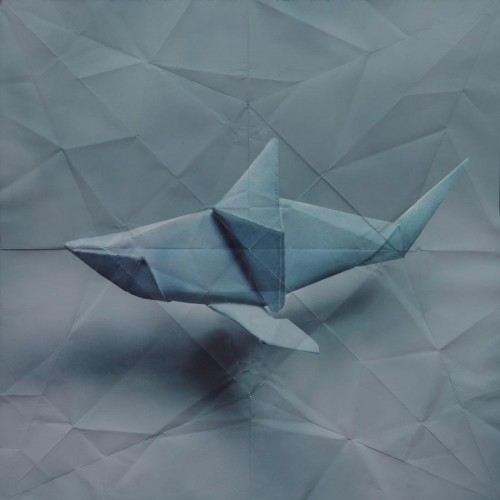
Origami Shark © Marc Fichou
Marc Fichou is the Second Prize winner of the 27th annual Photo Review International Photography Competition juried by Robert Mann.
Gabriella Radujko: Origami Shark is a photograph of a three-dimensional origami shark figure superimposed on the original, deconstructed kraft paper used to make it. What was the formative idea for this piece in particular and the series in general?
Marc Fichou: With the origami series, initially, we notice the image of a thing or animal. Then we become aware of an origami, a piece of paper. Finally, we realize that they are the same thing, just different facets which are revealed in different stages of time and space. It was my idea to first stimulate the mind, the imagination of the viewer, then to draw him inside the image, within the space where the origami is. Finally, through reasoning, he returns to reality and sees that what is actually before him is nothing but a sheet of paper.
I wanted to demonstrate how increasingly evolving technologies enable us to merge the real with its image. Subsequently, we record reality and revisit it in the form of images. But our memory can only retain the real time moment for a few seconds before becoming memories which furthermore evolve over time.
Memories reactivated by our minds involve a consciousness of who we once were as in “I am the child I once was.” In contrast, memories captured using technologies like the still camera or video are somewhat dead. These images, then, transport us to a time that has disappeared or no longer exists while simultaneously suggesting that we are experiencing that reality in real time. The images we capture are those of the past only; we cannot escape the material world.
GR: When discussing your work, you mention reuniting matter and its image, presence and absence, here and there, before and now. How are these concepts manifested in Origami Shark?
MF: In a classic photograph, the subject is captured in an image and then printed on paper. The image reunites us with the absence of the subject, i.e. “it or he was there at that time.” In contrast, Origami Shark is the material support, the sheet of paper on which it was printed. Indeed it was captured in different moments and shapes, but it is one and the same thing. With Origami Shark, the absence of the origami is connected to the presence of its double, the sheet of paper.
GR: Thirty years ago, in 1981, the exhibit “Cubism and American Photography 1910–30” was held at the International Museum of Photography at the George Eastman House. It rekindled a debate about cubism’s role in ushering in modern photography in the early 20th century. To what extent does cubism influence your photography?
MF: The appearance of photography in the 19th century and its ability to capture events and people robbed the painter of mnemotechnical work and challenged representation, changing the role of the artist in the process. The reaction was Impressionism, something that photography could not grasp. Since then and into a period of widespread use of photography through the 1990s, photography has tried to become recognized as a major art form, thus using ideas found in movements like cubism.
In my work, I have chosen to combine mediums and use a variety of technologies available to me to realize my ideas. With the origami series, I used photography because of its ability to freeze the moment as well as painting to color the sheet of paper with the blue color of the ocean. As for influences, I am not looking to transgress but rather remain open to ideas and movements. That would include cubism as it appears in my origamis, but it was not planned.
GR: What emerging trends in fine art photography interest you? How are you integrating those trends, if applicable, to your own practice?
MF: I am interested in plastician photography in general, but I especially like the works of artists like Lauren Marsolier who has been able to transgress her medium using the technological tools of our time. To some degree, the artist integrates the work of his peers within his own, but as far as I am concerned, it is never intentional. But once the work is completed, it is often apparent.
GR: Which photographic images and/or photographers inspire you? Which non-photographic influences inspire you?
MF: Joseph Kosuth’s conceptual photography interests me. He juxtaposes an object, its full-scale photographic reproduction and its dictionary definition. Also, the work of plastician photographer Sophie Calle, primarily her use of photography as narrative, but also her displays where the support is made prominent and takes on a sculptural form. We find similar experiences in Rene Magritte’s paintings. He combines words and images with their support, subsequently questioning the real and its representation. Video art pioneers like Nam June Paik and Peter Campus are also influences. At the other end of the spectrum is outsider art. I like it for its spontaneity and because it both conceals and reveals the psychology of its creator. But my most important influences come from philosophy and psychology, especially the ground-breaking theories developed by Henri Bergson and Jacques Lacan.
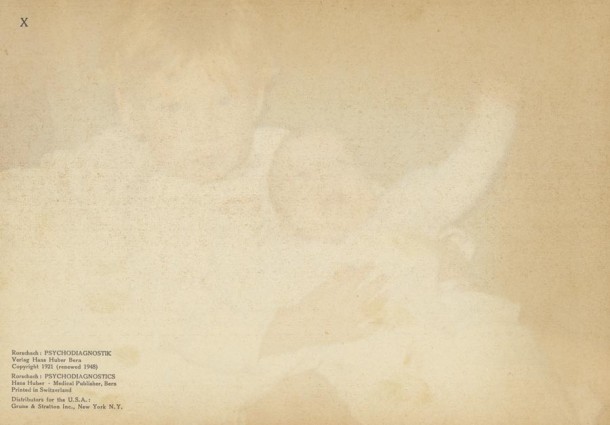
X, from the series Self Diagnosis © Odette England
Odette England is the Third Prize winner of the 27th annual Photo Review International Photography Competition juried by Robert Mann.
Gabriella Radujko: While working on WPA assignments, the writer Eudora Welty took photographs of people she encountered while travelling through her home state of Mississippi. The results can be found in the book One Time, One Place, Mississippi in the Depression: A Snapshot Album, which she described as “a family album.” She wrote that while making the “snapshots,” she imagined herself into the lives of her subjects. Have you imagined yourself into your photographs in the Self Diagnosis series?
Odette England: I think to a degree, I have, and that was a relatively easy task because every single snapshot in the series features me in it. Nine of the ten snapshots in the series were made by my mom or my dad. I had a really long familiarity with these images in the family album as something that has been shown to me and that I have grown up with. My mom, like many moms, is the gatekeeper of our family album. So for me to even borrow from it, to undertake this project, was something unique in it’s own right.
The family album is something that has always been very closely guarded but shared socially with friends and family. It think that current technology has changed that because most people don’t necessarily make snapshots and put them in an album and then use the album as an opportunity for friends and family together. In a way, this project, for me, was realizing some of the still special quality that comes from the actual print of a snapshot and where it resides in the album and what role it has in sowing facts or storytelling about someone’s past and how I have been coming to manipulate that and knead it and mold it in some way to fit my own artistic purposes.
GR: Ludwig Andreas Feuerbach, in the preface to the second edition of The Essence of Christianity, wrote, “But certainly for the present age, which prefers the sign to the thing signified, the copy to the original, representation to reality, the appearance to the essence…illusion only is sacred, truth profane.” Is Self-Diagnosis illusion or truth?
OE: It’s an excellent question, and I think it’s both, depending on how a viewer comes to it versus what my intent for the work was. I think of Self-Diagnosis as a strange relationship between hiding and showing, where I teeter on some sort of basic collapse of public showing of family snapshots alongside the exposure of who I might be, via and according to a very narrow and deliberate edit of a selection of snapshots from the family album. Showing the snapshots that aren’t revealing don’t necessarily reveal anything deep or mysterious about me but combining it with the results of an inkblot test doesn’t either. Ten snapshots from a collection of hundreds do not a “complete me” make. So I think of this as a little bit of playing hide and seek with the viewer, the nature of photography, and myself.
GR: Many photographers (Nicholas Nixon, Sally Mann) make their children their subjects. What challenges does intimacy present in photographing one’s family?
OE: I think one of the biggest challenges is how the imagery is ultimately going to be read. When I think of Sally Mann’s work and having read interviews with Sally Mann, her claim has always been that she never intended for her images to be read in some of the more detrimental, negative light in which they have been. I’ve been asked a similar question about Self-Diagnosis.
I thought this work is as much about this hiding and showing of me or this expression of failure where I don’t really show myself, nor do I completely show or clearly show the snapshot in which I am in, as double-exposed on the Rorschach card. But it’s also a relationship of boss and subordinate. This is what is particularly relevant about Sally’s work. For me, the subtext of Self-Diagnosis is one of the relationships of power, of mother/daughter or father/daughter. In the case of the Rorschach card — the clinician/patient; in the case of my artwork, of artist/viewer.
The editing, the collating and the showing parts of the family album is invested with personal bias. Albums are maintained in a certain way, just as the inkblot test is. So there’s a transfer or a transaction of imagery and story, and therefore it’s proof when one is shown an album, or a snapshot, or an inkblot or an artwork. Access to my own childhood through the album is heavily mediated and therefore predetermined by maternal preferences. They were mom’s wishes and tastes at how it would be presented and therefore in an aegis sense doomed to fail in providing a true picture. The inkblot test is an orderly two-page form, which once completed suggests this semi-standardized systemized idea in writing of who you might be. The dynamics that are inherent within snapshots are reflected in the structure of the collection, of the collection itself, and they don’t always necessarily show what the author intended it to be read because the viewer will come at it using their own bias. Whilst the content of my imagery is very intimate, it’s not necessarily giving a whole lot away, and for me, the failure in the work makes it a great success.
GR: You state, “I don’t take photographs. I make loss.” In her book, Necessary Losses, Judith Viorst writes about the universality of loss including the loss of childhood, the death of family members and friends, and finally our own deaths. Do you embrace loss as well as make it?
OE: I embrace it as much as I am willing to. I have a love/hate relationship with loss. I embrace the notion of it as something that I can use as a creative lever — I cannot make work unless it’s personal. One of the many foundations in being personal, is it has some sense of loss of the past and in particular what it means to love home and leave home. When I think of loss, I think of the fact that childhood is a reverie. It’s a place of longing, a place I wish to go back to, but cannot. The world is just one big “un.” It’s uncomplicated, unhurried, unpressured. At some point, the “un” leave home before we do. I need a remedy or proper treatment for my loss. Maybe photography is my rehabilitation or perhaps I need proper therapy, which is why I tend to use Rorschach tests in order to appropriate work. In embracing the loss and in taking very personal artifacts, which are soon “snapshots to be,” I am playing with the role of photography in this idealistic association between childhood and innocence by leveraging its very illusory nature. I think the fantastical qualities of childhood and its apparent innocence are part of this creative inquiry that I have and why I rely on snapshots so heavily in my work. Snapshots are always a part of loss.
The word I keep coming back to is mirage. It means to look at and to wonder at. I think of snapshots as mirages. They are these lovely things that you can wonder at and think about and contemplate the past, but they ultimately show a moment of loss, because the moment the shutter is pressed, the moment is gone. It’s only recording this moment of loss, which is terribly sad, but I tried to take a more happy, modernist approach by freezing aspects of everyday life which are often very natural and spontaneous and giving them this strangeness with the cold and diagnostically frank and the scientific, which in this case is the Rorschach test.
GR: Which photographic images and/or photographers inspire you? Which non-photographic influences inspire you?
OE: I am in the process of drafting my thesis, so I have had to think very carefully about whose work I particularly draw from and why. For many and varied reasons, I tend to go towards the work of those who pick very personal subjects, but illuminate them in a way that I haven’t seen before. There’s someone like Nancy Rexroth, for example, and her series Iowa, in which she took a dinky, little toy camera called an Diana, and from 1970 to 1976, she made images in Ohio that reminded her of Iowa and she made the series accordingly. So none of the images actually show Iowa except for Nancy’s interpretation. But from this dinky, little camera she makes these gorgeous platinum prints that are so beautifully rendered and capture all sorts of fleeing, transitory dream-like moments.
I also really like the work of Larry Sultan, in particular his pictures from Home Series which he made over a ten-year period and was inspired by when his father Irving was forced into semi-retirement from a job that he worked for 30 to 40 years. Larry started making the work in his early to mid-thirties and he was feeling restless about his home and his life and his idea of what it meant to be family and to have roots planted in a specific location. He invited his parents to narrate alongside the images he was making. So its this lovely, poignant subject of not just his relationship to home, but a relationship he has with his parents.
I am embarking on a similar style of project, which is why I have been doing a great deal of reading about those two, in particular. But there are other photographers whose work I admire. Tracy Moffat, the Australian photographer, her series Plantation, which she made in 2009 from pictures she took ten years earlier of these very strange, exotic landscapes, which she never actually gives away the location of where these were taken, which is part of the mystery behind the work — the fact that there’s no real narrative going on; there’s this strange, mysterious male character who continues to appear. All the projects that I speak of are deeply personal and they don’t really give a great deal away, so there’s a wonderful proximity for me as a viewer to enter the work and apply myself within the work.
It’s almost as though we can exchange places. I can see myself in the imaginery and I can see myself thinking about the imagery. Mostly, I veer toward literature that has a personal bias. Gaston Bachelard and the other French philosopher, Georges Perec and his Species of Space and Other Pieces. Susan Stewart’s On Longing. Tim Ingold has a book called Lines: A Brief History. Numerous authors who write about things about place. I am half-way through Ken Jennings’ book Maphead, which is deleriously funny if you love the study of maps and geography. Anyone who is writing about place and location and what that means to one’s current and past.
Gabriella Radujko is a librarian working at the intersection of library culture and contemporary art. She is committed to transforming libraries into cultural spaces and places of discovery by delivering programming, curating art shows, overseeing art and photobook collection development and creating bibliographic displays.
Additionally, she works as a freelance journalist and is a regular contributor to Artcards Review where she writes about contemporary art, focusing on fine art photography. Her poetry can be found in two anthologies, The Rutherford Red Wheelbarrow (2010) and Gape-Seed (2011).
Radujko received a Master of Library and Information Science from Rutgers Universityin 2005 and has worked in libraries as diverse as the Oradell Public Library, Oradell, NJ, Cipriani Club 55 Library, New York, NY and the Sri Narayani School Library, Tamil Nadu,India.

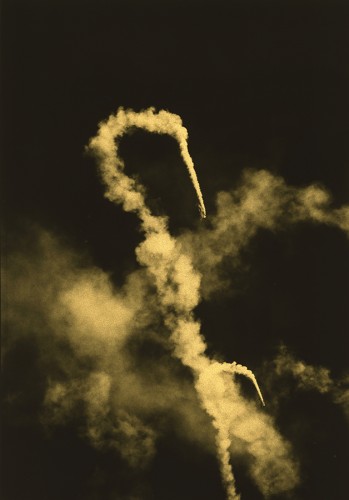
 RSS
RSS